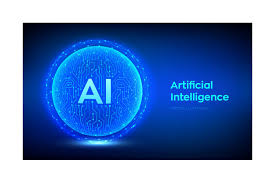
The Intersection of AI and Robotics: The Future of Automation
In the field of artificial intelligence (umělá inteligence) (AI), Natural Language Processing (NLP) stands out as a transformative technology that allows machines to recognize the meaning, interpretation, and generation of human language. As a subset of artificial intelligence, NLP concentrates specifically on the interplay between machines and humans by using natural language. It aims to bridge the gap between people and machines.
NLP combines computational linguistics, computer science, as well as data science, to process and analyze large volumes of natural language data. Its applications are varied that impact various industries, including healthcare, finance customer service, entertainment.
One of the most fundamental components of NLP is text analysis. Through the use of techniques like tokenization, part-of-speech tagging, and recognized entities, NLP systems can break down text into its components and understand its grammatical structure. This enables machines to decipher meaningful information, identify crucial entities, and grasp context.
Another critical component of NLP is the ability to analyze sentiment. This involves determining the tone of an emotional document, which can be particularly useful when businesses want to measure customer feedback or monitor their brand’s reputation. Through analyzing posts on social media and product reviews, as well as feedback surveys, companies are able to learn about the mood of their customers and make data-driven decisions.
Machine translation is an incredibly popular application of NLP which is demonstrated by tools like Google Translate. This technology allows real-time translation of text from one language into another, facilitating cross-cultural communication and breaking down language barriers. The advancements in NLP have dramatically improved the accuracy of translation and makes it an effective instrument for global communication.
Speech recognition is a different area in which NLP excels. In the process of converting spoken words into written text, speech recognition technology powers virtual assistants like Siri, Alexa, and Google Assistant. These systems depend on NLP to understand spoken commands, give appropriate responses, and perform tasks such as setting reminders or answering questions.
NLP is also a key part in the generation of text. Language models, such as OpenAI’s GPT series can generate meaningful and coherent text in response to prompts. These models can be utilized in content creation as well as customer service or creative writing demonstrating the potential of NLP to enhance the creativity of humans and increase productivity.
Despite its advances, NLP faces challenges, such as dealing with ambiguous language, context sensitivity, and cultural subtleties. Addressing these challenges requires ongoing research and refinement to increase the efficiency and accuracy of NLP systems.
In summary, Natural Language Processing is an effective tool that can bridge the gap between human communication and machines. Its applications in the field of text analysis, sentiment analysis, machine translation speech recognition, as well as text generation highlight its transformative impact on different industries. In the years ahead, as NLP continues to evolve, it promises to further improve our interaction with technology, and will drive the development in AI.